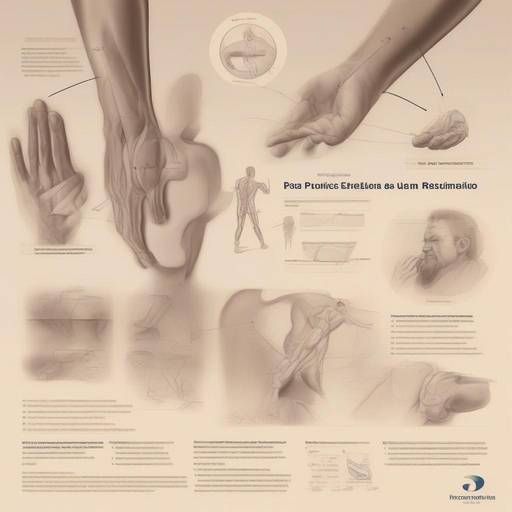
In the digital era, ergonomics not only applies to the design of physical spaces, but also to the digital environment. Digital ergonomics refers to the adaptation of digital devices and tools to ensure the physical well-being and working efficiency of people using them. In this article, we will explore in detail the importance of digital ergonomics and how productivity in the working environment can significantly impact.
History and Background
Digital ergonomics has its roots in traditional ergonomics, which focuses on the design of working environments to adapt to the physical and mental capacities and limitations of people. With the rapid advance of digital technology, the need to apply ergonomic principles to devices such as computers, tablets and mobile phones became evident.
The emergence of digital ergonomics can be traced back to the increase in the use of personal computers in the 1980s and 1990s. As more people spent long hours in front of digital screens, there were concerns about the impact on health and productivity.
Benefits and Challenges
Digital ergonomics seeks to optimize human interaction with technology, which brings many benefits. By adapting digital devices and spaces to the needs of the user, the risks of musculoskeletal injuries, visual fatigue and other health problems related to the prolonged use of technology can be reduced.
However, there are also challenges, such as the accelerated pace of technological evolution, which can hinder the consistent application of ergonomic principles in emerging digital devices and systems.
Detailed Analysis
Digital ergonomics encompasses a wide range of principles and practices aimed at improving user experience and physical well-being. Ergonomic designs can include from the layout of keyboards and screens to the organization of software interfaces and the implementation of scheduled breaks.
Studies have shown that well implemented digital ergonomics can increase comfort, reduce stress, improve work efficiency and prevent work-related injuries.
Comprehensive review
The effective application of digital ergonomics covers multiple aspects, from the physical configuration of digital workstations to the design of intuitive user interfaces. It is essential to consider the needs and wishes of users, as well as the specific demands of the digital tasks they perform.
In addition, digital ergonomics can vary according to the type of device used, which requires customized approaches to ensure user comfort and productivity.
Comparative analysis
Digital ergonomics shares similarities with attention to physical well-being in the workplace and optimization of work efficiency. These elements are closely interrelated and mutually reinforcing.
While digital ergonomics focuses on the adaptation of digital devices, physical well-being encompasses a wider spectrum that includes aspects such as posture, lighting and the working environment. Working efficiency, for its part, is directly influenced by the comfort and ease of use of digital tools.
Practical Tips and Accessible Advice
To optimize digital ergonomics, it is important to consider a number of key factors, such as the layout of the workspace, the adjustment of the height and the angle of the devices, the proper lighting and the implementation of active pauses to rest the sight and muscles.
In addition, ergonomic training and awareness can play a crucial role in promoting a healthy and productive digital environment.
Perceptions of Industry and Expert Reviews
Experts from various areas, including occupational health, ergonomics and user experience design, provide valuable insights on the importance of digital ergonomics. Their contributions emphasize the need to integrate ergonomic principles into the design and use of digital devices to promote the health and well-being of users, as well as to maximize working efficiency.
Case Studies and Real Life Applications
The positive impact of digital ergonomics can be illustrated through case studies that demonstrate how successful implementation of ergonomic practices has improved the quality of life and productivity of workers in different working environments.
By examining concrete examples of organizations that have prioritized digital ergonomics, we can better understand how these measures not only benefit employees, but also contribute to the success and sustainability of companies.
Future Trends and Predictions
As technology continues to evolve and play an increasingly central role in everyday and working life, digital ergonomics are expected to become even more important. In addition, the growing interest in labour well-being and sustainable productivity is generating additional momentum towards the application of ergonomic principles in the design and use of digital technology.
A future in which digital ergonomics is more deeply integrated into the development of devices and applications, and in which organizations adopt more holistic approaches to promote health and well-being in the digital working environment, is seen.
Conclusion
Digital ergonomics is a key element in ensuring that digital technology is not only useful and efficient, but also healthy and sustainable for users. By prioritizing digital ergonomics, organizations and individuals can benefit from a digital working environment that promotes physical well-being and work efficiency.
This attention to digital ergonomics is not only crucial from a corporate responsibility perspective, but can also provide clear benefits in terms of productivity, labor satisfaction and long-term health.
Frequently asked questions
Why is digital ergonomics important in the working environment?
Digital ergonomics is essential to protect the health of workers who use digital devices on a recurrent basis, avoiding musculoskeletal injuries, visual fatigue and other problems related to the prolonged use of technology.
What are some practical tips for improving digital ergonomics in a working environment?
Some practical tips include adjusting the height and viewing angle of the screen, using ergonomic chairs, implementing active pauses to rest your sight and muscles, and maintaining a proper body posture.
How can digital ergonomics impact work efficiency in an organization?
By promoting a more comfortable and healthy digital working environment, digital ergonomics can reduce fatigue and improve employee concentration, which in turn can lead to increased productivity and work efficiency.
Are there regulations or regulations related to digital ergonomics?
Some countries have regulations that directly or indirectly address digital ergonomics, such as rules on maximum working time against a screen, the layout of workspaces and the design of technological devices.
What is the role of training and awareness in promoting digital ergonomics?
Training and awareness of ergonomic practices are vital for workers to understand the importance of digital ergonomics and to implement measures to protect their health and well-being in the digital working environment.
How is digital ergonomics expected to evolve in the future?
Digital ergonomics are expected to acquire even greater importance as technology continues to play a central role in working life, and to be integrated more deeply into the design and use of digital devices.
In short, digital ergonomics represents a fundamental pillar for ensuring health, physical well-being and working efficiency in the digital environment. By understanding and applying the principles of digital ergonomics, organizations and individuals can create healthier, more sustainable and productive digital working environments. While technology continues to evolve, the importance of digital ergonomics will remain crucial to promoting well-being and work performance in the digital environment.
Remember that digital ergonomics is a dynamic and constantly evolving theme, so it is essential to be aware of the latest trends and best practices to ensure an optimal digital working environment.
With this in mind, we invite you to explore the topic more thoroughly, perform ergonomic adaptations in your digital environment and promote an organizational culture that values and prioritizes well-being and productivity. Make digital ergonomics a pillar for a healthier and more efficient work future!
With a deep focus on digital ergonomics, physical well-being and work efficiency, this article seeks to provide an integral understanding of these key concepts. In addition, the inclusion of a FAQ section is expected to provide readers with practical and detailed answers to common doubts on the subject. If you need additional settings or more information on any specific aspect, do not hesitate to let me know.






















































